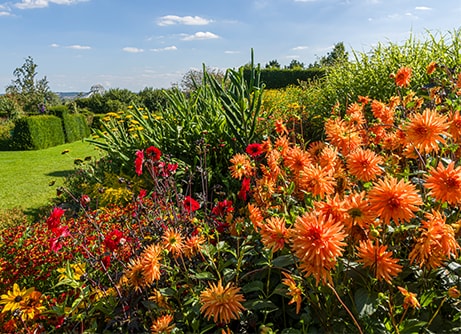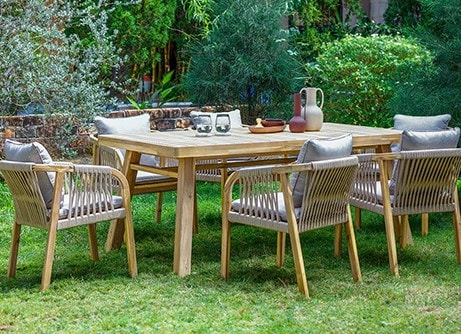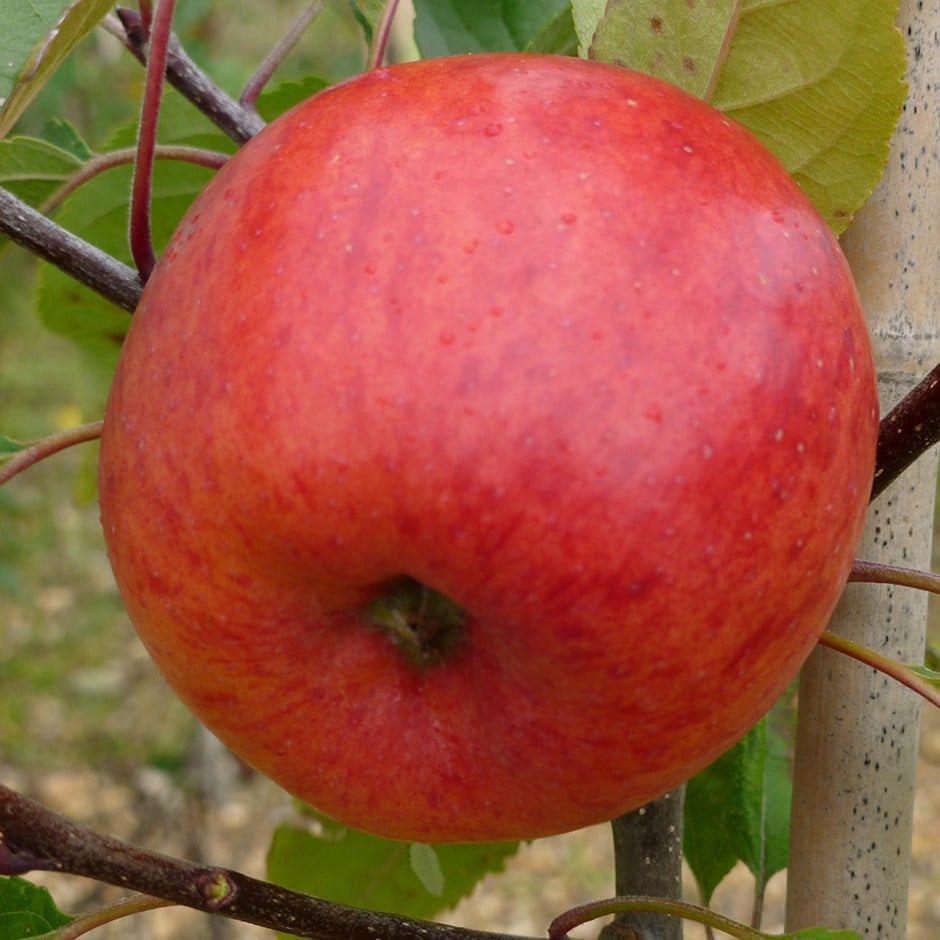'Jupiter' is a vigorous cultivar well-suited for northerly, colder, and wetter areas. The apple skin starts as greenish-yellow and turns to a lustrous golden yellow with flushes of orange-red. It offers a sharp, strong, slightly more acidic flavour than Cox, with heavy crops ripening from late October to January.
The irregularly shaped fruit may have heavy russeting but store well, providing a good supply even until late winter. The juicy flesh, off-white with a hint of green, has a dense and firm texture, described as "fruit cocktail" in taste. The foliage turns a beautiful orange-red in autumn, complementing the marvelous yellow-red fruits, ideal for fresh eating, pies, and crumbles.
Pollination information: This apple belongs to pollination group 3, however it is a triploid cultivar and requires a pollinating partner to produce a crop of apples. For a bumper crop, it can be cross-pollinated with other apples in this group.
How to care for apple Jupiter (PBR):
When planting your apple tree, prepare a hole up to three times the diameter of its root system. Fork over the base of the pit in readiness, incorporating plenty of organic matter into the backfill and planting hole. Place the plant in the planting hole and carefully refill, firming the soil around the roots to eliminate air pockets. Insert stake at this point if required.
Avoiding frozen and waterlogged soil, trees should be planted out as they arrive. If you've ordered a bare root tree, soak the roots in a bucket of water for half an hour prior to planting - or if this is not possible, they can be heeled in temporarily, covering their roots with soil, or potted up.
Keep the base of the tree weed free, fertilise at the beginning of each year water regularly during hot, dry spells.
The main prune should be done in the winter as long as it isn't frosty or freezing. Take out the 3D’s (dead, dying and diseased wood) and create an open shape. Then reduce the leaders back by a third. Aim to create an airy structure without any crisscrossing branches.
In August summer prune. Shorten any side shoots (or laterals) which are longer than 20cm back to three leaves. This will allow the sun to ripen the fruit and encourage more fruit buds. Make sure that the growth you’re cutting away feels firm to the touch.









